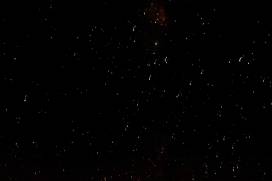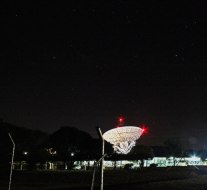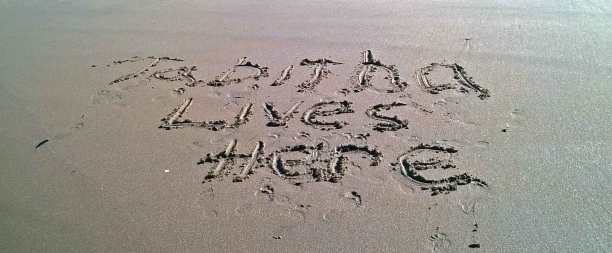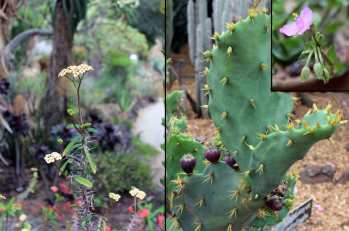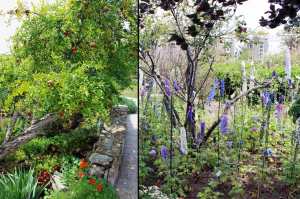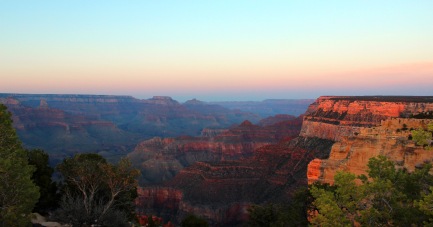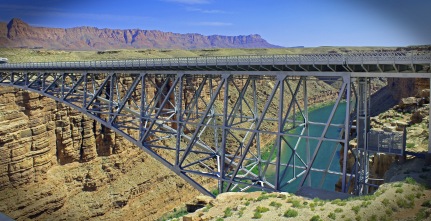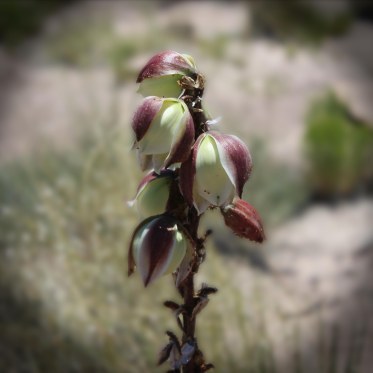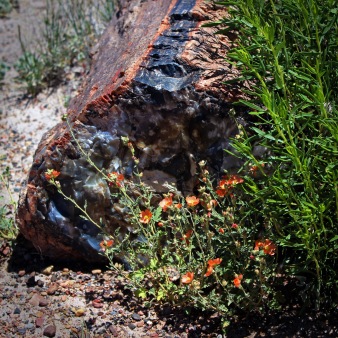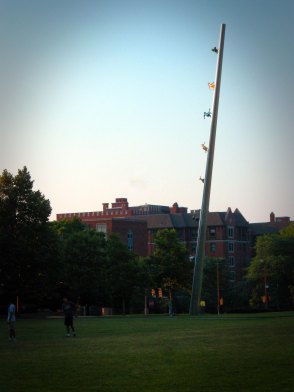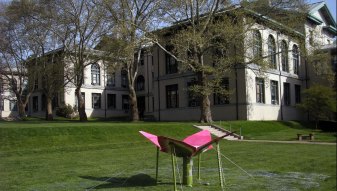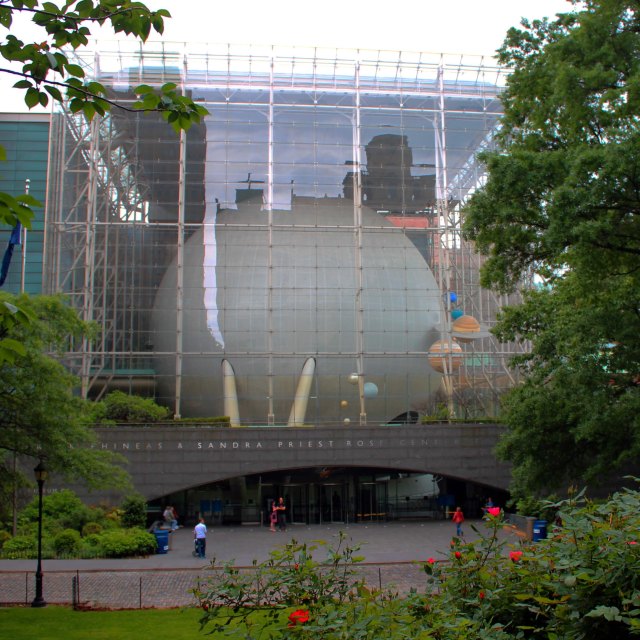
Zion Canyon, as seen from the Pa’rus Trail.
Hiking in Zion Canyon
I knew based on my inability to make a reservation that getting a campsite in Zion would require an early arrival. So when I headed into the park I stopped to get a campsite as my first thing in the morning. Even so, nearly all of the sites were full and I was only barely able to find a spot.
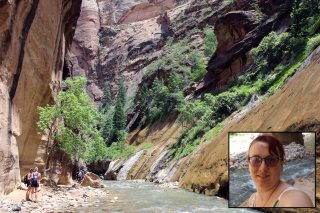
Hiking the Narrows.
Like the Grand Canyon, Zion National Park also has a shuttle system, so I could leave my car at the campsite. I decided that my first stop would be one of the most famous features of Zion, namely “the Narrows”.
This narrow slot canyon runs along the Virgin river at the head of Zion canyon, with only enough space for the river to run in many places. Despite this, because the river is quite shallow (no more than a foot or two in most places) it is common practice to hike the river. I decided to try the hike for at least a short distance, and found myself wading through very cold water up to about my knees, completely inundating my sneakers. Because the river twists and turns, around each corner was a new sight to see.
This was one of the more unique hiking experiences that I had ever had, and one that made me wish I had a hiking stick. Eventually, I decided to turn around and head back to the main canyon. Fortunately, I managed to make it back to the trail-head without falling.

Section of the Kayenta trail that passed through a crack in the canyon walls.
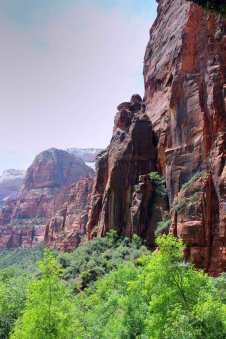
View along one side of the main Zion canyon walls.
Following the success of my first hike, I decided that I was up for a second before lunch. One of the interesting things about the park, was that they don’t sell bottled water. Instead, they have water filling stations at many of the trail-heads. I had finished off the water I had been carrying on my previous hike, so I filled up my water bottle and set off up the Kayenta trail. This trail would take me to the Emerald pools, which I thought sounded interesting.
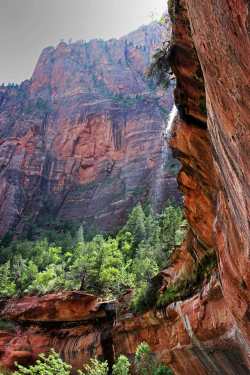
Small waterfall that fills the lower Emerald Pool.
Unfortunately, I had underestimated how tired and overheated I was after the first hike. This meant that I had to take the nearly 2 mile hike slowly, especially as the first half was mostly in the sun and uphill.
Eventually I turned off into the side canyon where the Emerald Pools were located, and was very glad of the shade. The pools themselves were very pretty, and one of the neat features of the pools is that they are common watering holes for local wildlife.
In addition, the trail actually led behind the waterfall that fills the pool, so I was able to enjoy the moisture and coolness that came from the rocks. At the end of the hike, I was very glad to be done and immediately went to grab lunch.
Things to See

Court of the Patriarchs (Abraham, Isaac and Jacob).
The set of hikes that I had done had taken so much out of me that I ended up heading back to the campground after lunch to rest. This also let me relax in the shade during the hottest part of the day, which is a good idea when you’re in the desert.
Later on, as the afternoon began to turn into evening, I headed back out to see some of the views that I had skipped earlier in the day. One of these was the Court of the Patriarchs, a section of the canyon wall named by a Christian pastor after the patriarchs of Genesis. I also took this as an opportunity to snap a picture of myself that wasn’t done selfie style.

Some of the flowers I saw in the canyon, as well as the mule deer that was hanging out in the campground.
One of my favorite things to do when exploring is to check out the native flora and fauna. This is especially true when there are flowers blooming. The cacti had blooms of several colors, although it was almost the end of spring so there weren’t many left.
Inside the campsite, there was a lone mule deer just sitting there grazing. I was able to get much closer to her than I would have thought possible (only a few feet away), but I guess that’s what happens with animals that live in a protected area.
As the day came to an end, I was pleasantly surprised that the camp ground wasn’t too noisy or rowdy. I guess a big part of that was the fact that most of the campers had just spent the day hiking. Unlike in the Grand Canyon, the weather was reasonably warm so I wasn’t shivering under all of my covers.
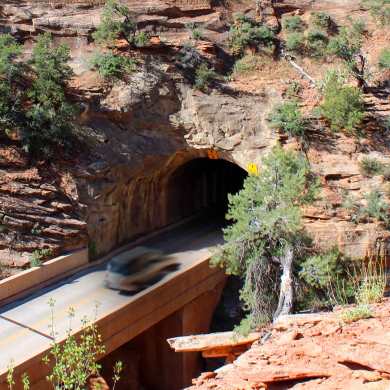
View of the east entrance to the Zion-Mt Carmel tunnel from the overlook trail.
The next morning I decided to head up the side of the canyon to check out the overlook trail before I left the park. One of the interesting things about the road is the Zion-Mt Carmel tunnel. This tunnel, which was originally built in the 1920s, is over a mile in length. The trail-head for the overlook trail is just on the other side of the tunnel from the canyon.
Hiking the overlook trail is not for those who are afraid of heights, as sections of the trail are quite narrow with no railing. But, once you reach the end of the trail and look out onto Zion Canyon from above, you can’t help but admire the magnificent view. It was the perfect way to end my time in Zion.
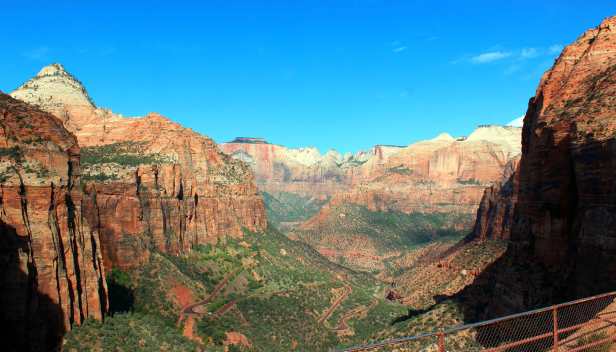
View of Zion Canyon from the end of the Overlook Trail.
Onward and Westward
From Zion National Park, it is an afternoon’s drive to my parent’s house in the foothills southeast of Los Angeles. This was a drive full of desert landscapes and sparse vegetation. I even passed through Las Vegas along the way, but chose not to stop. I was ready to be done with my time on the road.
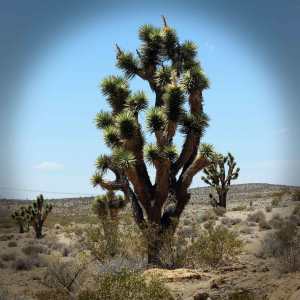
Joshua Tree at the rest stop near the border between Nevada and California.
One thing that I did stop to see was one of my favorite plants found in the American Southwest, namely the Joshua Tree. This plant has special meaning to me, in part because it shares the name of my older brother. Most of my memories of seeing it as a child were also during family road trips, so that adds to the nostalgia.
Of course, one of the inevitable things about driving into the Los Angeles area, is encountering traffic. Fortunately I didn’t have too much to deal with, and was able to make it to my parents house in the afternoon. Since I’ve never actually lived at this house (my parents moved in after I started graduate school), it’s not quite home. Still, I was glad to be able to sleep in my old bed and finally begin visiting with my family.


